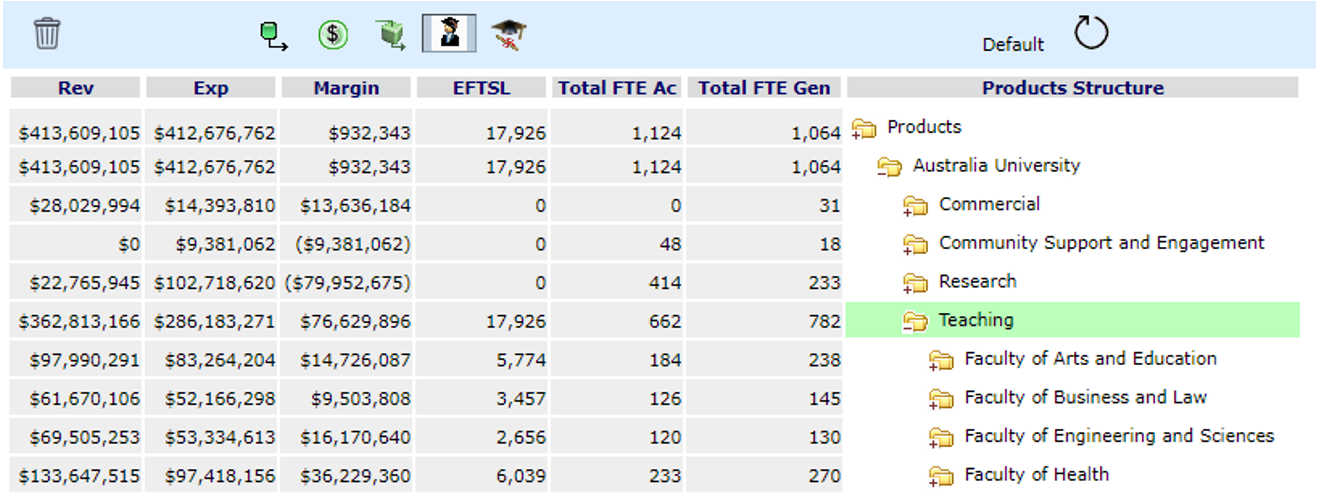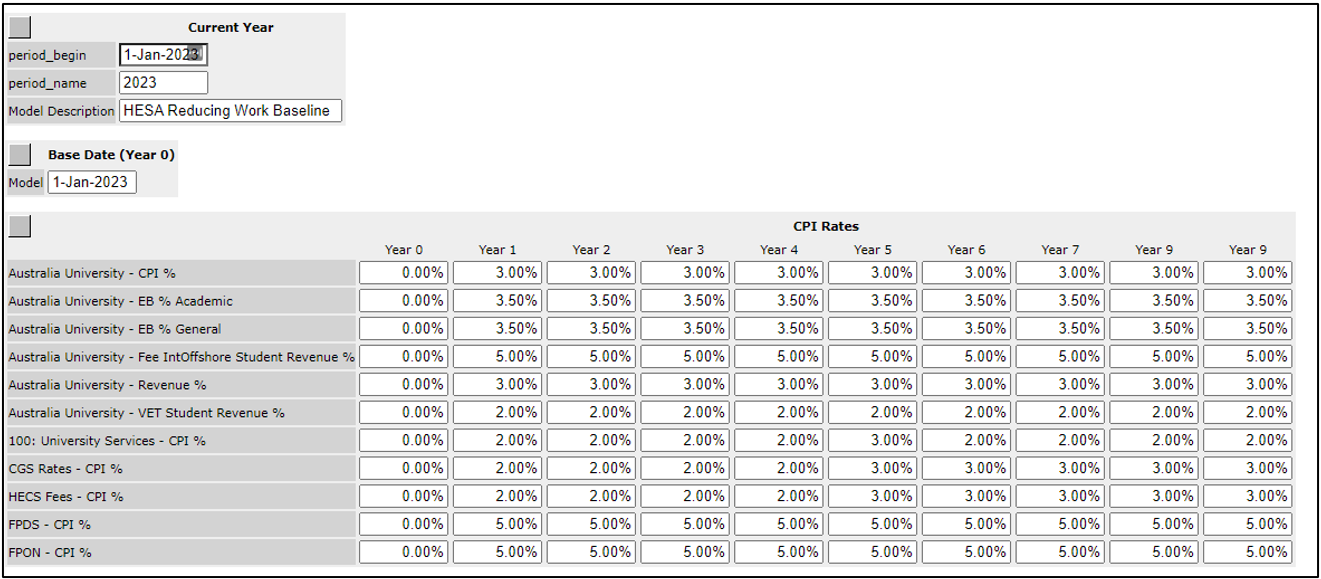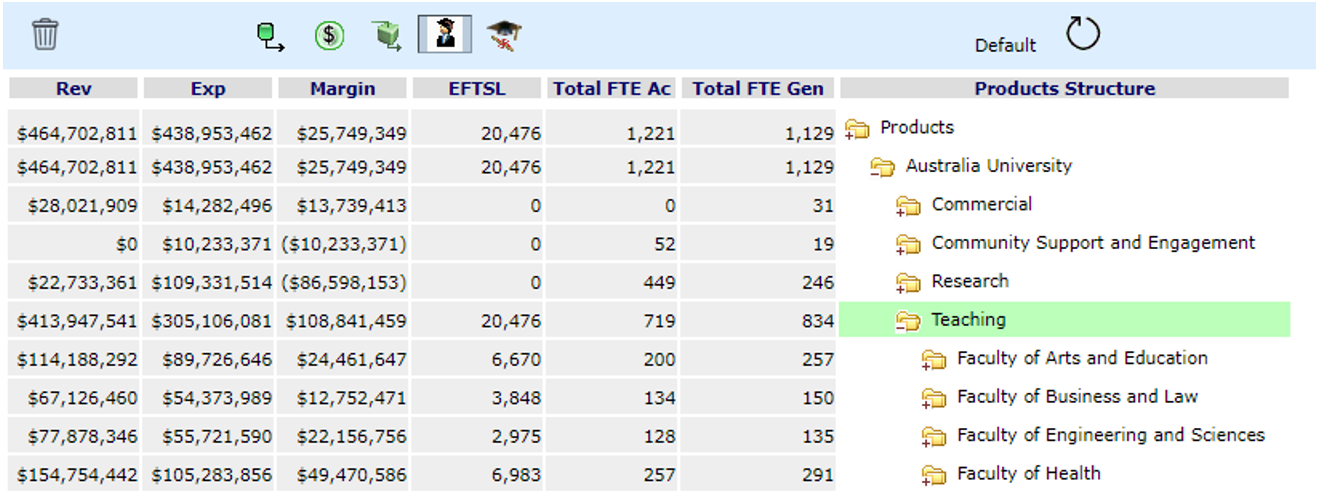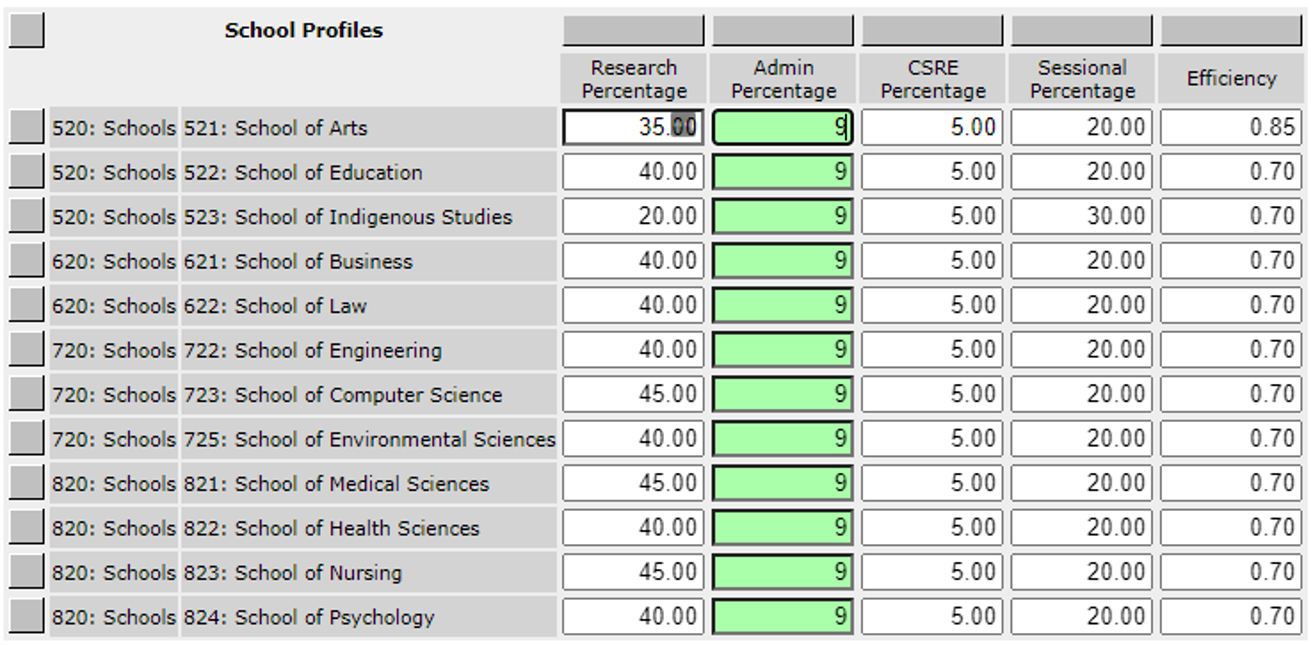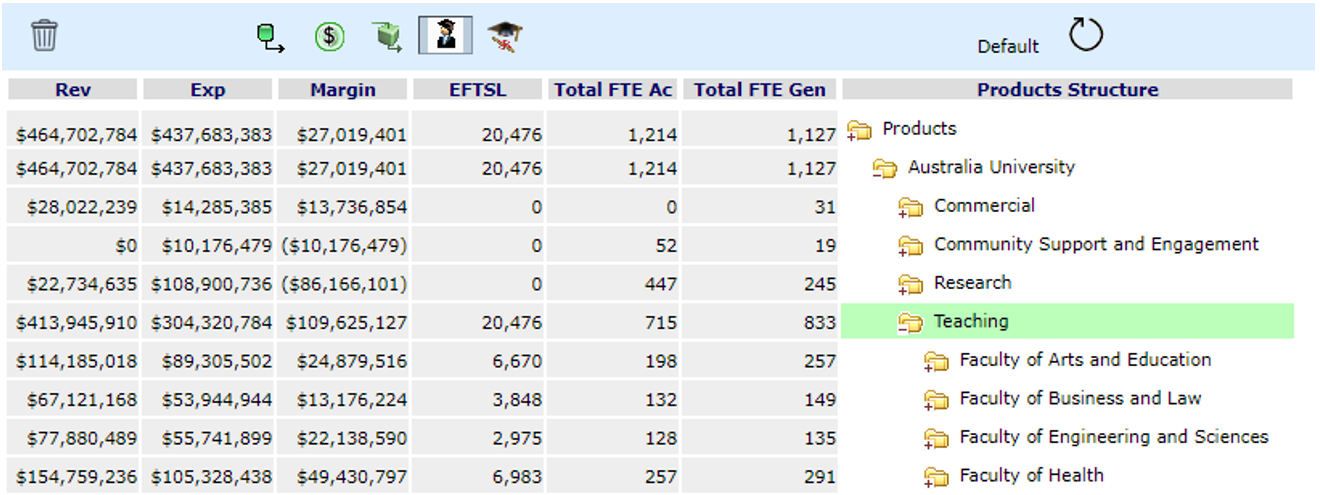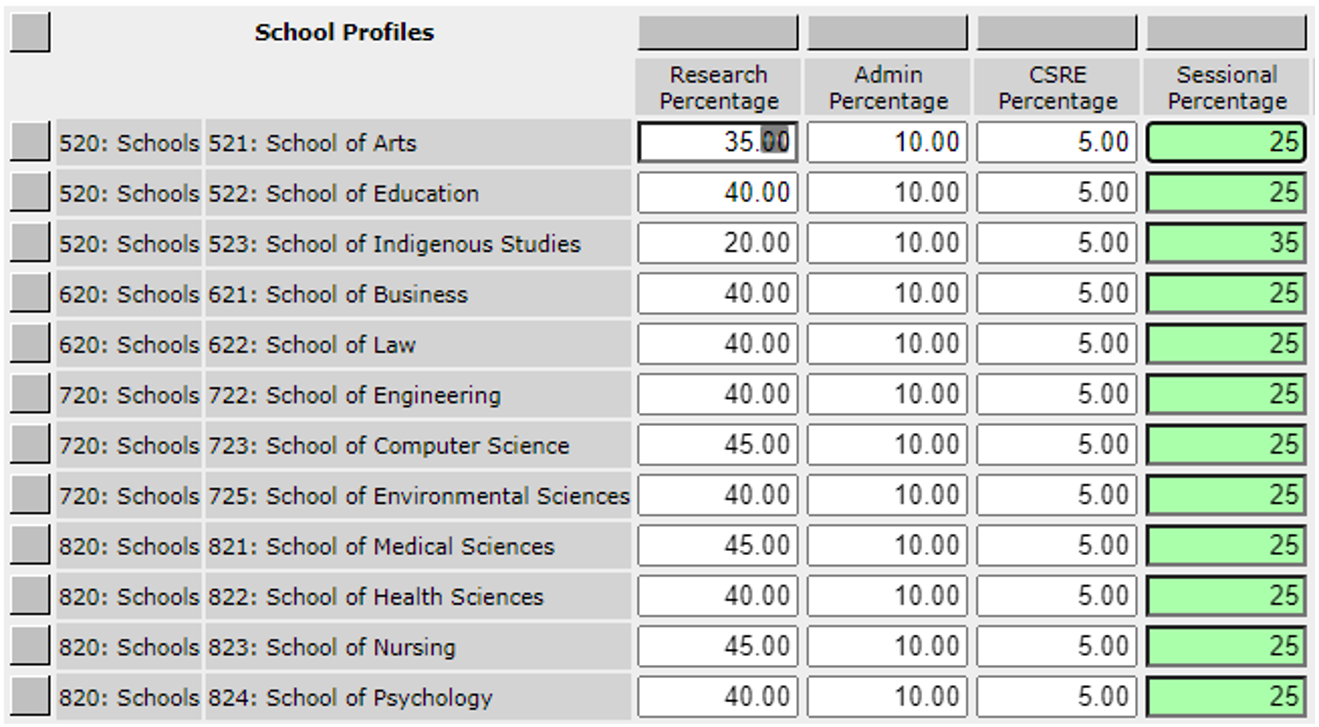Last week, I read a blog post by Alex Usher titled “Reducing Work” where he suggests some ways universities can make teaching more efficient. These include:
- Driving down the real cost of wages by keeping wage rises below inflation,
- Dropping the average rate of pay per instructor, by increasing the sessional teaching load,
- Changing the teaching/research mix, by increasing teaching only positions and/or reducing the amount of time spent on research, and
- Re-design academic jobs to make them less time-consuming, by reducing administrative tasks (simplify and streamline admin tasks) and separating grading from teaching, so lower paid staff can do the grading allowing the teachers to teach.
Alex is exploring these options because he predicts that domestic student numbers will increase by 20% over the next five years while the revenue stream remains static.
Luckily, we can use these assumptions in our predictive model to see how they might impact a university. The model we’re using is a demonstration model with dummy data, but it’s representative of many institutions we’ve modelled over 15 years. While the actual numbers won’t represent any one institution, the results will be indicative of what universities could expect.
We’ll review each of Alex’s proposals separately and together, comparing the baseline results to the forecasted results. To keep things simple, we’ll only compare a single 12-month period, but we can create more detailed models for longer timeframes in the predictive model if required.
The Predictive Model
Our predictive model is a financial model designed to take resource consumption trends of previous years and forecast one to ten years into the future based on changing a range of variables. A major benefit of the predictive model is that multiple scenarios can be developed covering a wide range of possible “what ifs” and then quickly and easily compared to determine the optimum way forward.
Let’s look at the type of university in this demonstration predictive model.
University Specifications:
Revenue: $413,609,105
Expense: $412,676,762
Margin: $932,343
Equivalent Full-Time Student Load (EFTSL)[1] – 17,926
Total Academic FTE – 1,124
Total General FTE – 1,064
From this model, it is evident that teaching is generating a significant profit of $77 million, while research is incurring a substantial loss of -$80 million, which is not an uncommon scenario. In fact, Andrew Norton has produced a comprehensive report on how teaching subsidises research at Australian universities, stating that “More than $2 billion in surpluses from teaching are being used to fund research…”. Hence, it is clear that institutions could benefit financially by prioritizing teaching over research. However, this could potentially compromise their ranking. Thus, the question arises – which is more crucial?
Let’s start with the base assumption, that domestic student numbers will increase by 20% in the next five years. Since our predictive model is based on Australian universities, that translates to Commonwealth Grant Students (CGS), which is a known fixed amount of revenue. I won’t include Domestic Fee Paying (DFP) students because this revenue can be quite a bit higher and determined by the individual institutions.
Furthermore, we can obtain a more detailed analysis by conducting simulations based on a gradual increase over a five-year period and incorporating specific CPI rate and Enterprise Bargaining increases, as depicted in the screenshot below. However, for the sake of simplicity and ease of comparison, we will only evaluate each scenario for a one-year (base year) period and determine the primary cost differentials. Additionally, since the 20% increase is uniformly spread across the entire university, we can further examine individual schools or academic programs and adjust student numbers as necessary.
The 20% rise in domestic students has resulted in a significant increase in margin from $932k to $26 million and triggered an increase across the board, including both academic and general staff, assuming that the university retains the existing curriculum, and more students enrol in the same courses. The data indicates that despite a 20% increase in student load, there is only a 9% increase in academic full-time equivalent (FTE), and the total expense of the university has only risen by 6%.
This is because, the model computes the anticipated teaching load for the surge in student numbers and calculates the necessary teaching hours and staff needed to accommodate that load, resulting in a financially favourable outcome. However, we will examine some of the efficiencies mentioned in Alex’s blog post to determine their financial implications.
Reduction in Administrative Burden
Now, let’s examine the financial impact of a 10% reduction in administrative effort, assuming the university can streamline its processes and lessen the administrative workload. In the demo model, we have only allocated 10% for administrative tasks, which may be lower than the actual figure, but we will maintain it for this exercise’s sake. However, if this were a real model, the institution could modify all these variables to fit their specific situation.
Although the reduction in administrative effort is modest, with a drop from 10% admin time to 9% admin time, the results demonstrate that it has boosted the overall margin by roughly $1 million, as shown below.
Separate grading from teaching
Within the model, we can modify the percentage of time allocated to research, administration, and community support, as well as the percentage of academic work handled by sessional (part-time) staff. For this exercise, we will increase this percentage by 5% for all schools, assuming that these sessional staff will undertake grading responsibilities.
As a result of this adjustment, the margin has risen since the increase in sessional staff has lowered the number of academic staff to support the teaching load. This is because the added sessional staff have relieved some of their duties, allowing them to concentrate on teaching more. The model calculates both the cost increase for more sessional staff and the cost decrease for fewer academic staff.
Combine Admin Reduction and Grading Separation
When combining both of these scenarios, the margin has increased from $26 million to $37 million, resulting in an $11 million increase overall, solely from these two conservative estimates. However, the most significant issue with implementing these models in practice is that staffing numbers are reduced to improve overall margins. Therefore, it would be best to forecast this reduction over a five or ten year period and rely on natural attrition rather than mass layoffs. The goal here would be to avoid hiring additional academic FTE in the first place and instead focus on handling the additional workload through increased use of existing academics’ time and sessionals. An expanding student cohort presents an excellent opportunity to enhance efficiency without having to execute redundancies to achieve those benefits.
There are other scenarios we can explore based on the blog post, especially those involving changes in the teaching/research balance. If there are any specific scenarios you would like to see, please let me know in the comments below.
[1] This is an Australian term – similar to Student FTE
